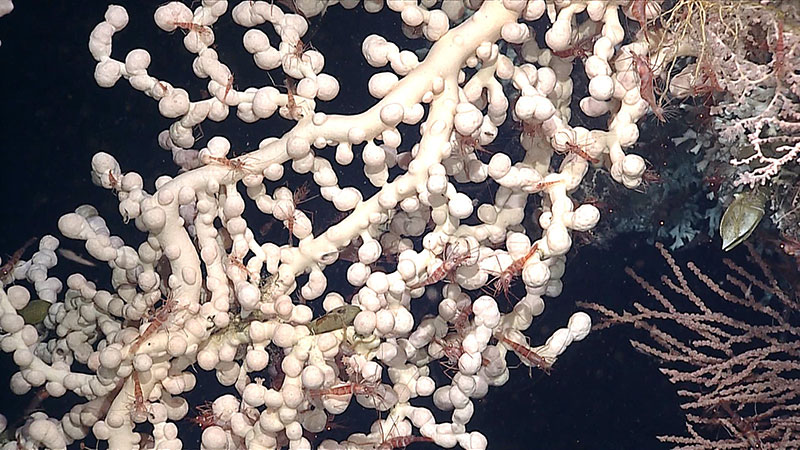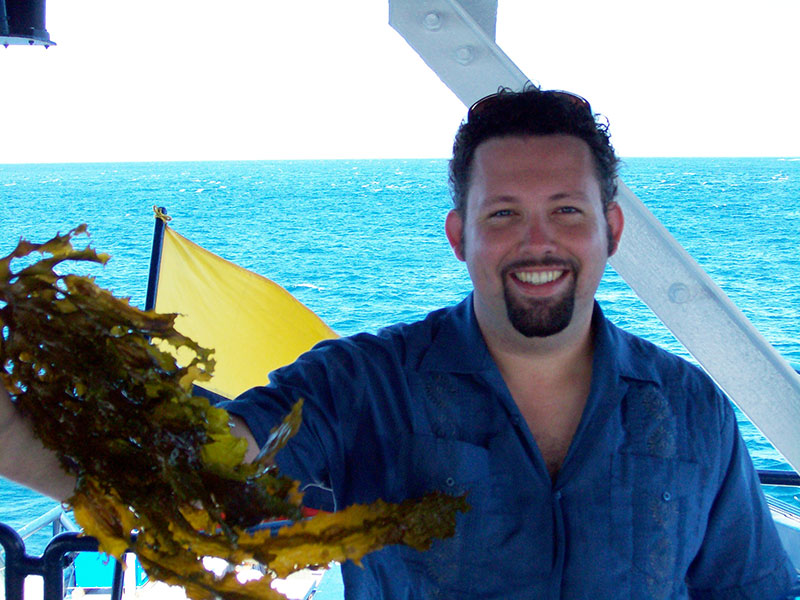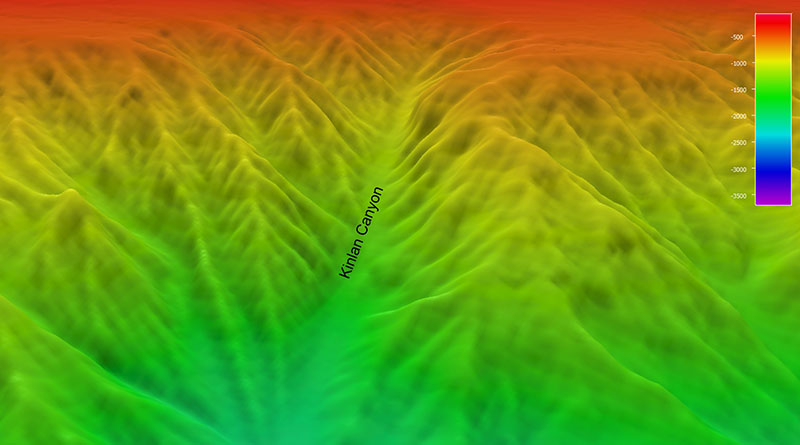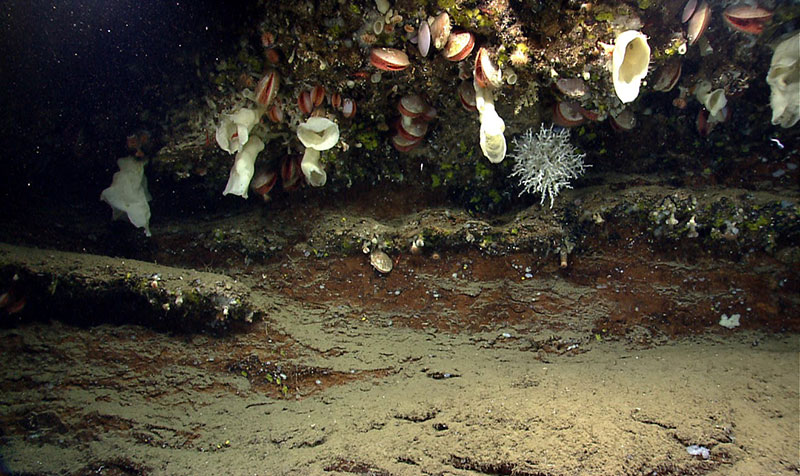
by Heather Coleman, Deep Sea Coral Research and Technology Program
Martha Nizinski, NOAA/National Marine Fisheries Service National Systematics Laboratory
September 3, 2019
Video courtesy of the NOAA Office of Ocean Exploration and Research, Deep Connections 2019. Download larger version (mp4, 117.7 MB)..

Many species of corals and sponges can be found in Kinlan Canyon, including bubblegum coral (Paragorgia arborea), a species of particular interest to Brian. Image courtesy of Northern Neighbors: Transboundary Exploration of Deepwater Communities. Download larger version (jpg, 1.3 MB).
In 2018, only a year and a half after Dr. Brian P. Kinlan passed away, his colleagues in the NOAA Fisheries Office of Habitat Conservation, NOAA Fisheries Office of Science and Technology, as well as the Department of Interior’s Bureau of Ocean Energy Management, joined together to commemorate his life’s work by naming Kinlan Canyon in his honor. Now, only a year later, the Deep Connections 2019 expedition will dive inside Kinlan Canyon to explore deep-sea coral and sponge communities and to celebrate Brian’s life and work.

Dr. Brian Kinlan. Image courtesy of Michael Graham, Moss Landing Marine Lab. Download larger version (jpg, 1.5 MB).
Brian was a marine spatial ecologist with the NOAA National Centers for Coastal Ocean Science. He revolutionized NOAA's approach to locating seafloor areas that are likely to support deep-sea corals through predictive habitat modeling, work that was particularly influential in the Northeast U.S. region. Dedicated to bringing the best available science to resource managers, Brian helped the Mid-Atlantic Fishery Management Council include predictive habitat modeling results in the decision-making process for protected area recommendations.

A perspective view of the bathymetry of Kinlan Canyon. Image courtesy of the NOAA Office of Ocean Exploration and Research, Deep Connections 2019. Download larger version (jpg, 720 KB).
In the words of Kiley Dancy of the Mid-Atlantic Fishery Management Council, "Brian developed habitat suitability models that completely changed the way we approach development of proposed [conservation] areas." Brian’s work informed the location of boundaries for the Frank R. Lautenberg Deep-Sea Coral Protection Area and the Northeast Canyons and Seamounts Marine National Monument, both of which will be explored during the current Deep Connections 2019 expedition.

ROV Deep Discoverer took this photo in Kinlan Canyon in 2013. The dive track explored the northeastern wall of the canyon and was composed of thinly layered bedding planes, with ledges populated with various fauna, including sponges, cup corals, octocorals, colonial scleractinians, bivalves, seastars, fish, anemones, zoanthids, shrimp, and a few urchins. Image courtesy of the NOAA Office of Ocean Exploration and Research, Northeast U.S. Canyons Expedition 2013. Download larger version (jpg, 759 KB).
Brian participated in a number of research expeditions throughout the Northeast U.S. region, which targeted numerous canyons including the recently named Kinlan Canyon, with the goal of testing and refining his models. Data collected on those expeditions, as well as the current Deep Connections 2019 expedition, continue to be used by his colleagues to improve the habitat suitability models he designed. To learn more about Brian’s deep-sea coral predictive habitat modeling work, please check out his presentation from January 2017.
Based on previous explorations of Kinlan Canyon, as well as Brian’s models, we expect to see high abundances of corals in Kinlan Canyon. A previous dive inside Kinlan Canyon in 2013 by remotely operated vehicle (ROV) Deep Discoverer, as well as one in 2017 by ROV ROPOS, discovered more corals than had been observed in any canyon of its size and morphology previously explored in this region. The dive conducted inside Kinlan Canyon on the current Deep Connections 2019 expedition will directly support several stakeholders, including the NOAA Deep Sea Coral Research & Technology Program and its mission to locate vulnerable deep-sea coral and sponge habitats. Today, as we explore Kinlan Canyon, we commemorate the scientific contributions and the memory of our friend and colleague, guided by the same models that he helped develop.